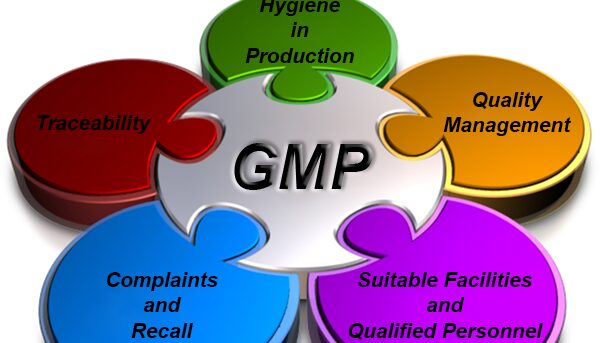Good Manufacturing Practice (GMP) is a system for ensuring that products are consistently produced and controlled according to quality standards. It is designed to minimize the risks involved in any pharmaceutical production that cannot be eliminated through testing the final product.
GMP is an important part of the overall HACCP food safety system in a food business. Good manufacturing practices (GMP) can be defined as the operational requirements necessary to enable a food business to produce food safely.
Basic GMP and the food business
Good manufacturing practices (GMP) includes many basic operational conditions and procedures that are required to be met by the food business. These can include the following:
- The correct construction and layout of the food premises.
- The condition of the external environment of the food premises.
- The adequate maintenance of equipment and utensils used within the food business.
- The use of suitable chemicals within and around the food premises including cleaning chemicals, pest control chemicals and machine lubricants.
- The identification and storage of waste within and by the food business.
- The cleanliness of the food premises, equipment, utensils, floors, walls and ceilings.
- An effective pest control program implemented within the food premises and surrounds.
- The avoidance of foreign matter within the finished product. Sources of foreign matter can include wood, glass, metal, plastic, pests, paper, string, tape.
Major common GMP for any Food establishment:-
1. Establishment Design and Facilities
The structure and location of a processing plant need to be considered in relation to the nature of operations and risks associated with them.
- Food premises should be designed to minimize possibilities of contamination of commodity or product.
- Design and layout should permit maintenance, cleaning and disinfection of the site to minimize airborne contamination.
- All surfaces that come into contact with food should be non-toxic, as well as being easy to maintain and clean in order to prevent any additional contamination.
- Suitable facilities should exist for temperature and humidity control when required.
- Effective measures should exist to prevent access by pests
2. Control of Operation
Effective control measures should be in place to reduce the risk of contamination of the commodity or food supply such that it is safe and fit for purpose:
- Adequate time, temperature or humidity controls
- Food grade packaging
- Potable water supplies
- Maintenance of equipment
3. Maintenance and Sanitation
Procedures and work instructions should exist to demonstrate an adequate level of maintenance of an establishment as well as effective practices for cleaning, waste management, and pest control. Overall, these operations will support the ongoing control of potential food hazards that may contaminate food.
4. Personal Hygiene
Measures need to be in place to ensure that food handlers do not contaminate food. This objective can be attained by maintaining an appropriate level of personal cleanliness and following guidelines for personal hygiene.
5. Transportation
The method of transportation should be such that measures are taken to prevent any contamination or deterioration of the commodity. Commodities or product that need to be transported in certain environments should be appropriately controlled, e.g. chilled, frozen, or stored under specific humidity levels.
Containers and conveyors used for transporting food need to be maintained in good condition and be easy to clean.
Containers used for bulk transfer should be designated and marked specifically for food use only.
6. Training
All food handlers should be trained in personal hygiene, as well as in the specific operation with which they are working, to a level commensurate with their duties. Food handlers should also be supervised by trained supervisors.
An ongoing training programme for food handlers is paramount to the success of a Food Safety Management System
7. Product Information and Consumer Awareness
The end product should be accompanied by adequate information to ensure that personnel at the next stage in the food chain will handle, store, process, prepare and display the product safely. Since the consumer may be responsible for performing the ultimate control measure, the cooking of raw meat or fish, they should have all the relevant information required to carry out this step effectively.
All batches of food should be easily identified, by a batch or lot number, to allow traceability of the commodity if required.
